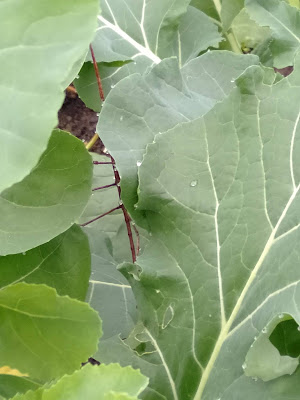We spent several enjoyable hours at the Melbourne Zoo last weekend, after finding our way on a city tram to Royal Park.
We first visited the Lion Gorge which also hosts tigers, snow leopards, the Tassie Devil and an interesting animal called a coatis, which is a lot like a lemur but with a pointy nose.
From there we wandered through the Wild Sea with pelicans, seals, and penguins. Then it was on to Growing Wild where we saw the beautiful red pandas and a gorgeous Japanese garden.
The Gorilla Rainforest was next, with tree-top apes and monkeys, lemurs - who roam freely around the human visitors, sunning themselves and showing off - tapirs, followed by the Trail of the Elephants and orang-utans. Finally we visited the giraffe, zebras and baboons.
All of this took so much time that we didn't even see the meerkats, any Aussie animals or the frogs and reptiles - maybe next time.
Zoos Victoria is helping fight extinction, particularly with 21 native threatened species. And the Melbourne Zoo is well laid out with large enclosures and so much greenery visitors really feel they are out in the bush with the animals.
A wonderful experience!
I am a writer, a reader and a traveller. This blog follows my search for knowledge about the natural world in which we live.
Sunday, August 18, 2019
Friday, August 9, 2019
The Biggest Parrot
Everyone knows I love birds; from hens and raptors to parrots and wrens, and everything in between. When we were in New Zealand a couple of years back we were fortunate to see the Kea in the wild, a beautiful colourful parrot-like bird that has real attitude. And we saw the Kakapo, an ancient flightless parrot that still survives today.
But what we didn't see was the extinct Heracles parrot, the largest parrot in the world. Another flightless parrot, it stood three feet high, weighed about 15 pounds and probably ate meat in addition to fruit and seeds.
Heracles was discovered in 2008 when a pair of leg bones were found in a former mining town in New Zealand. But it wasn't until this year that it was identified as a parrot, by comparing the bones to bird skeletons at the South Australian Museum, and to images of birds on the website of the Smithsonian National Museum of Natural History.
There are many extinct species of bird in New Zealand, including the Moa, a giant emu-like bird and its predator the Haast's Eagle. Scientists will now return to the site of the Heracles' discovery, an area rich in fossils from the Miocene period.
Kea
Kakapo
But what we didn't see was the extinct Heracles parrot, the largest parrot in the world. Another flightless parrot, it stood three feet high, weighed about 15 pounds and probably ate meat in addition to fruit and seeds.
Heracles
Heracles was discovered in 2008 when a pair of leg bones were found in a former mining town in New Zealand. But it wasn't until this year that it was identified as a parrot, by comparing the bones to bird skeletons at the South Australian Museum, and to images of birds on the website of the Smithsonian National Museum of Natural History.
There are many extinct species of bird in New Zealand, including the Moa, a giant emu-like bird and its predator the Haast's Eagle. Scientists will now return to the site of the Heracles' discovery, an area rich in fossils from the Miocene period.
Subscribe to:
Comments (Atom)
Stephanie the Stick Insect
Allow me to introduce you to the newest member of our family. We discovered Stephanie under the ever enlarging leaves of the broccolini in ...

-
I recently read about the Cattle Hill Wind Farm which is currently under construction in the Central Highlands of Tasmania. It will have 48...
-
Evolution is so creative. That's how we got giraffes. Kurt Vonnegut About The giraffe is our tallest land animal and is n...
-
We've all heard of a flock of birds, a colony of bats and a herd of elephants. But did you know our own Australian animals have some pre...















